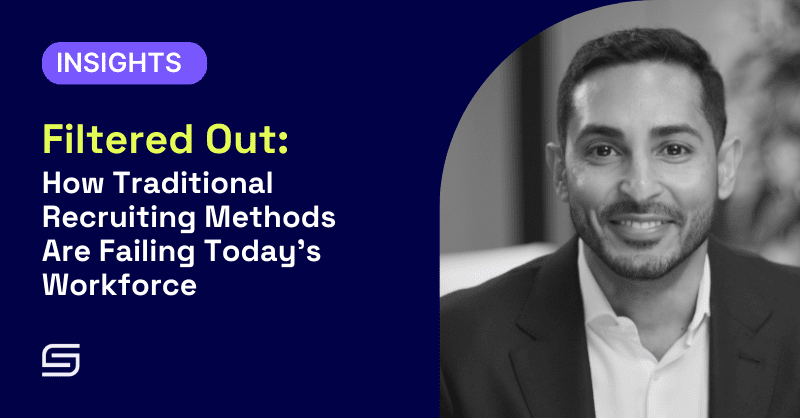Filtered Out: How Traditional Recruiting Methods Are Failing Today’s Workforce

I believe talent often exists in places where traditional recruiting methods don’t think to look, and as a result, countless opportunities are missed. This disconnect between untapped talent and available opportunities is one of the biggest challenges facing today’s recruitment landscape—something we at Smoothstack are actively working to solve.
The Financial Times recently highlighted how traditional recruiting is failing to keep pace with the evolving needs of the modern workforce. Companies are struggling to find the right talent, not because it doesn’t exist, but because the systems in place aren’t designed to recognize it.
Why Traditional Recruiting is Broken
Despite an influx of applications, recruiters remain inundated, and companies still face a shortage of skilled candidates. The reality is that the most qualified individuals aren’t always the ones with the perfect resumes that pass an ATS.
AI, for example, has made it easier for candidates to tailor their resumes with the right keywords to get past initial screenings, but this only highlights a larger problem: traditional recruiting still relies heavily on resume-based filters.
While AI-enhanced applications help more candidates reach recruiters, they also expose a deeper flaw in the system—it remains focused on formal credentials rather than actual capabilities.
Industries like AI/ML, advanced manufacturing, and cybersecurity are rapidly growing, yet many companies continue to filter candidates using outdated methods that prioritize credentials over capability. This results in skilled individuals—particularly those who have taken non-traditional paths—being overlooked simply because they don’t fit the conventional mold.
Beyond AI-Enhanced Applications: Embracing Skills-Based Hiring
True skills-based hiring requires more than keyword matching or resume enhancements. It’s about evaluating a candidate’s real-world abilities and contributions, not just what’s listed on paper. That’s why I’m encouraged to see companies like Siemens moving toward “skills-based hiring.” By prioritizing what candidates can do, rather than focusing solely on traditional qualifications, they’re unlocking untapped potential in a much broader talent pool.
The Smoothstack Approach: From Potential to Success
At Smoothstack, we take this a step further. Rather than just evaluating aptitude, we actively equip candidates with the skills they need to thrive in today’s fast-paced industries.
Our hire-train-deploy model ensures that individuals receive custom, hands-on training alongside real-world experience. This method delivers fresh, custom-trained talent into the workforce—talent that might otherwise go unnoticed by traditional recruiting methods.
As AI transforms industries and reshapes the job market, the demand for specialized skills is growing at an unprecedented pace. By 2025, the need for skills-based hiring will be more pressing than ever. At Smoothstack, we’re not just filling roles; we’re preparing individuals for success in environments where innovation never slows down.
The Road Ahead: Embracing a New Era of Hiring
Of course, moving to a fully skills-based hiring approach isn’t an overnight fix. It requires a collective effort across industries to shift from traditional metrics to recognizing true potential. However, I’m optimistic.
Companies like Siemens are already taking note of this shift, and as more organizations follow suit, I believe we can open the door to rewarding careers for deserving candidates, regardless of what’s on their resumes.
Here’s to the future of hiring, where skills—not credentials—lead the way.
Let’s Build Your Team
Connect with the Smoothstack team to learn how to close your digital skills gap with a custom-trained team.